Geese are large waterfowl birds which are widespread around the world. They are well known and are also popular as domesticated birds too. Many species of geese migrate and they are a common sight in the skies in the early spring and the early fall. Geese are fascinating birds and there is much to learn about them – including why they fly in formation and what they do when a member if the group is injured. But that’s not all, so join us as we discover 10 incredible geese facts!
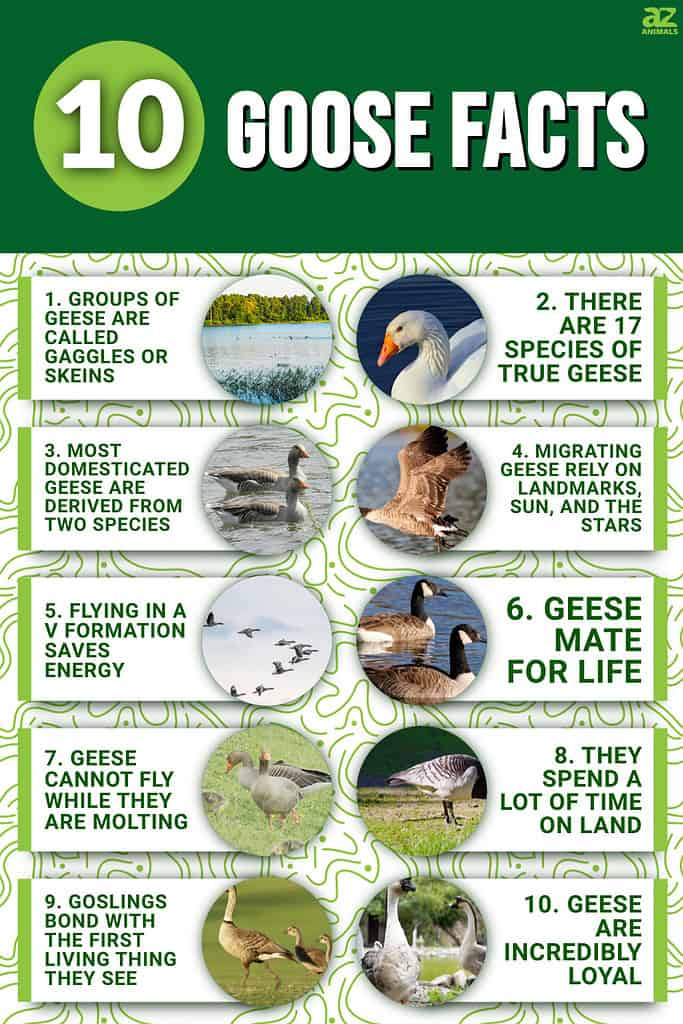
1. Groups of Geese are Called Gaggles or Skeins
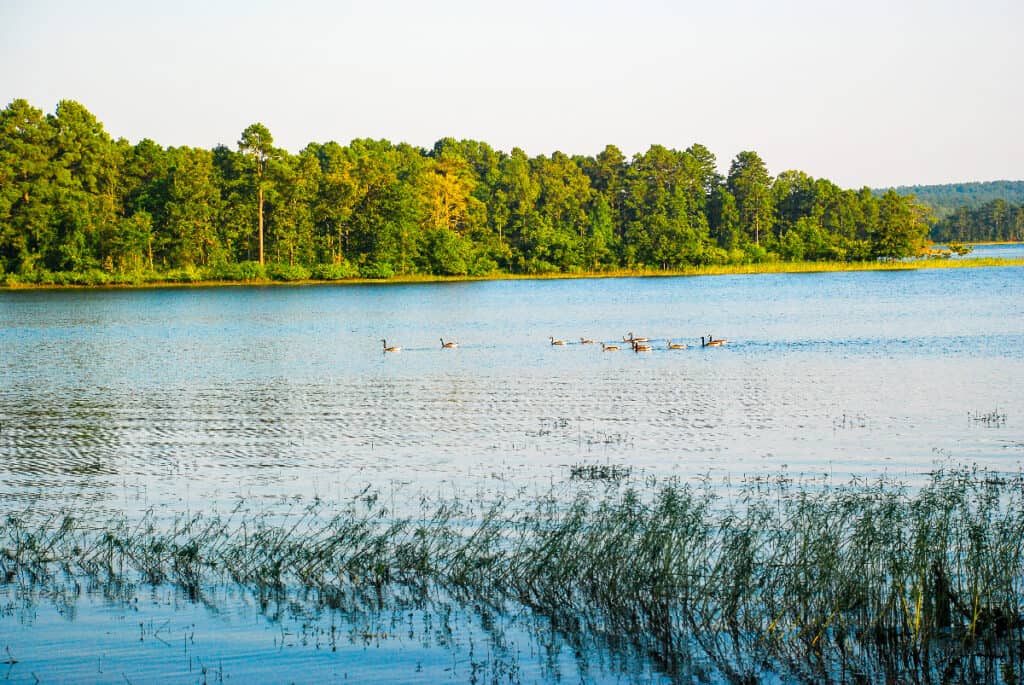
A group of geese is called a gaggle, a skein or a plump.
©Warren Price Photography/Shutterstock.com
There are many different terms for groups of geese. However, the most common one you’ve probably heard is the term “a gaggle of geese”. Gaggle is the term that is used to describe a group of geese when they are on the ground. A skein of geese is used to describe a group of geese when they are flying yet a plump is used when they are flying close together.
2. There are 17 Species of True Geese
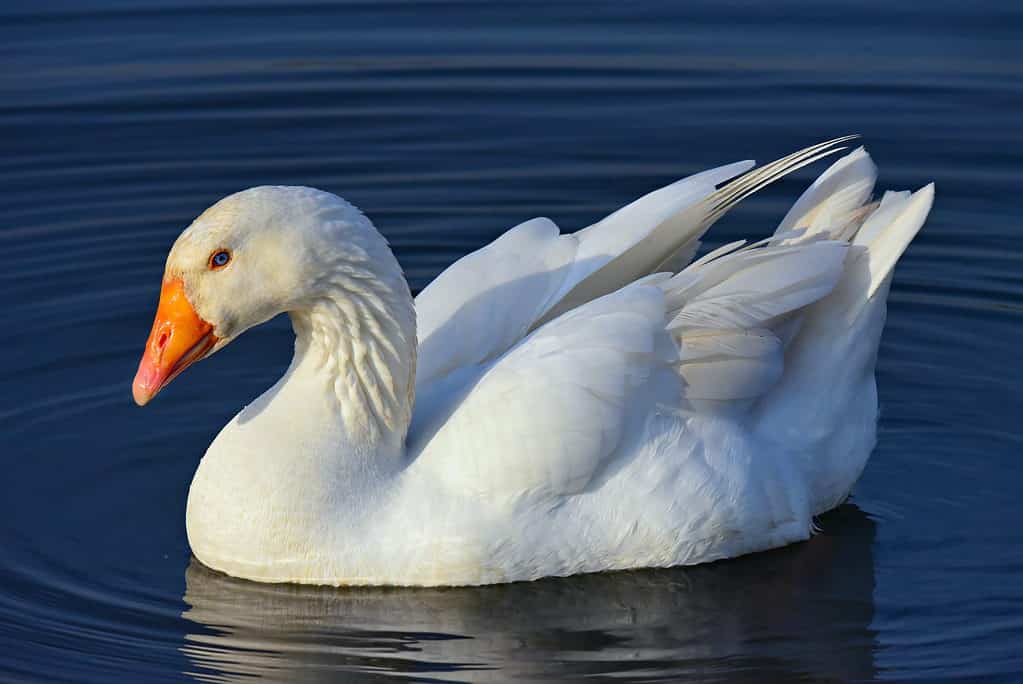
The pilgrim goose is a member of the genus
Anserthat has white plumage and blue eyes.
©Pxfuel, CC BY-SA 4.0 <https://creativecommons.org/licenses/by-sa/4.0>, via Wikimedia Commons – Original / License
There are 17 living species of wild true geese in the world today and they are divided into only two genera. The true geese are divided into the genus Anser which consists of grey and white geese, while Branta consists of black geese. Snow geese, Ross’s geese, and Emperor geese are sometimes classified in separate genera – Chen – but they are more often now included in Anser. Aside from the true geese, there are several other species that have “goose” in their name. It is widely debated as to what they should truly be classified as it is generally agreed that they more closely resemble shellducks.
3. Most Domesticated Geese are Derived from Two Species
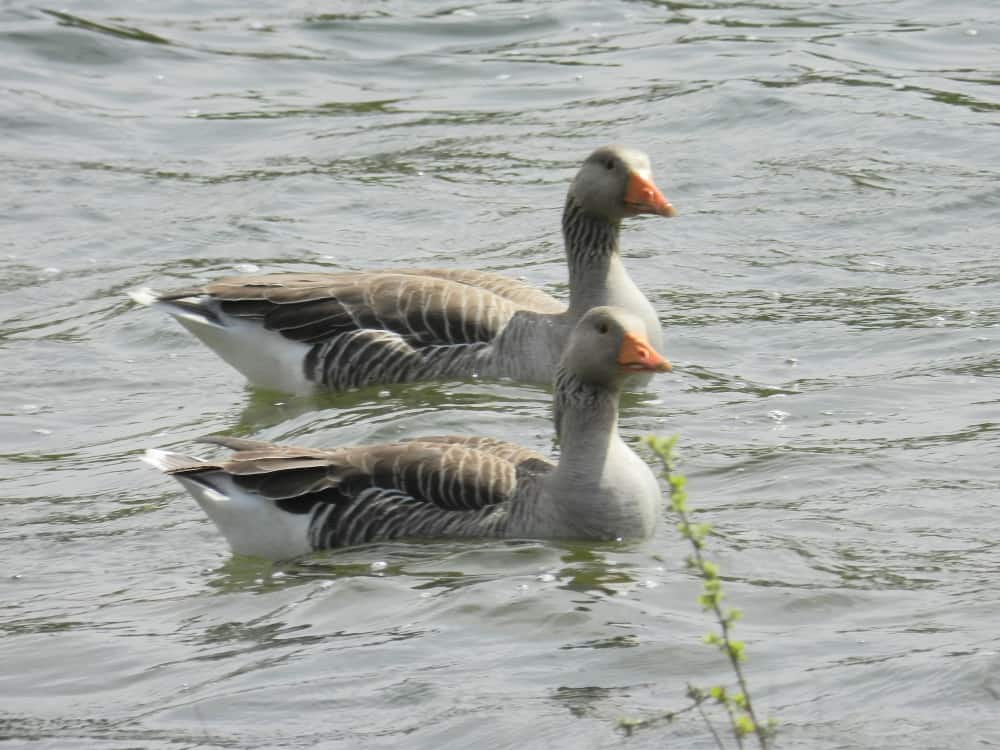
Most domesticated geese are derived from greylag geese.
©Millie Bond – Copyright A-Z Animals
Geese are kept as domestic birds all over the world and have been domesticated for thousands of years. They are extremely popular as they are kept for both their meat and their eggs. Most domestic geese nowadays are the result of selective breeding and are bred specifically for their particularly large size and for maximum egg-laying capabilities. However, virtually all domesticated geese are derived from only two species – greylag geese and swan geese. In Europe, Africa, and western Asia the greylag goose was the initial species to be domesticated, while in eastern Asia it was the swan goose.
4. Migrating Geese Rely on Landmarks, Sun, and the Stars
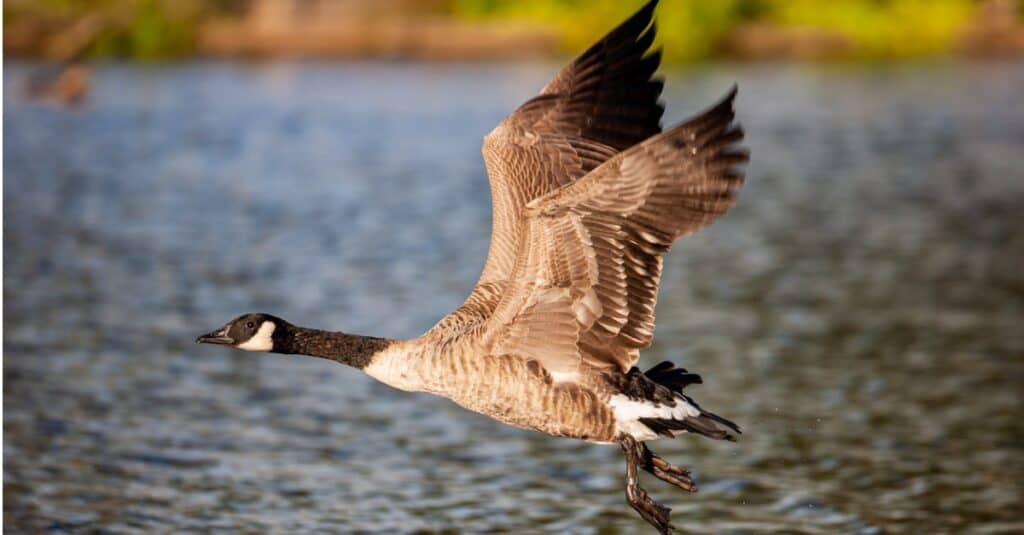
Canadian geese are more temperamental during the nesting season.
©iStock.com/Wayne Marinovich
Migrating geese are incredibly intelligent and they basically have a built-in compass to help them find their way. In part, they rely on landmarks that they recognize from previous migrations to know where to go. These can include things such as rivers or mountain ranges. This is why their first-ever migration is incredibly important as they learn their route from their parents. However, they also gather information from the positions of the sun, moon, and stars. Incredibly, they are also able to sense the Earth’s magnetic field. This allows them to tell which way is north and which is south.
5. Flying in a V Formation Saves Energy
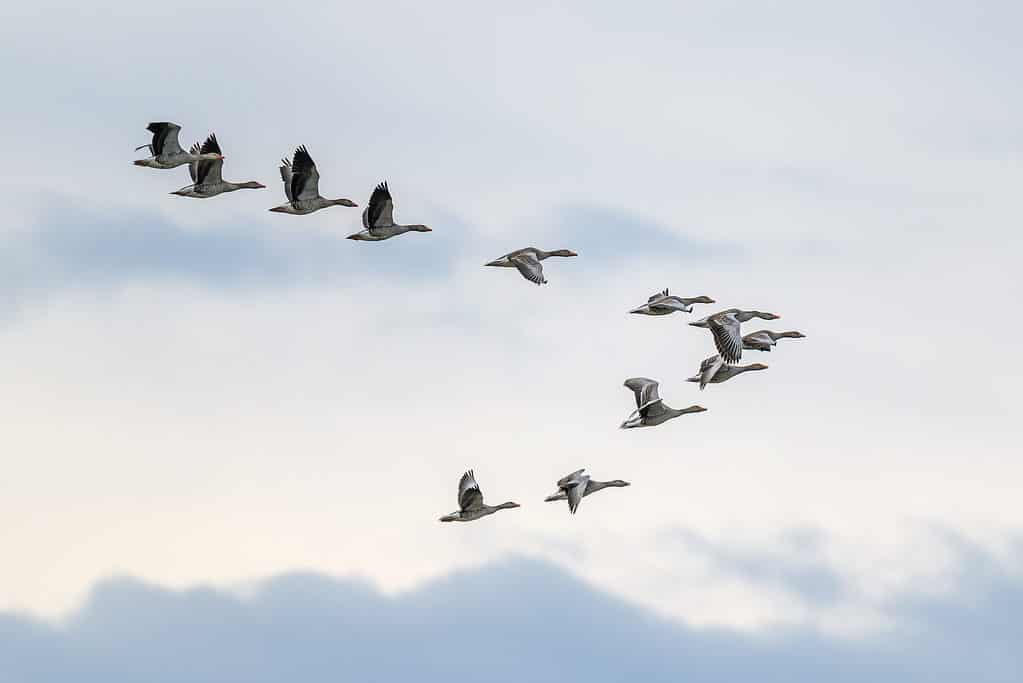
Geese fly in a V formation to take advantage of air currents created by their wings, thus conserving energy.
©Volodymyr Burdiak/Shutterstock.com
When it comes to birds one of the best-known sights is that of geese flying their way south on their annual migration in a classic V formation. However, the long-distance flights that most migrations require can be hard on geese. This is why they fly in the V formation as it helps them to conserve energy. By flying close behind but slightly to the side of the bird in front geese are able to reduce the drag. The bird in front helps to block any headwind while its flapping also creates a slipstream. The slipstream creates vortices (spinning pockets of air) which help keep the following bird in the air while also pulling it forward, thereby reducing the energy needed in flight. Obviously, the goose at the front gets tired much quicker than the rest of them which is why they regularly switch places.
Additionally, geese regularly honk while they are flying so that they can remain in communication and encourage each other. Considering that Canada geese can fly an astonishing 1,500 miles in a single day then they probably need all the encouragement that they can get!
6. Geese Mate for Life
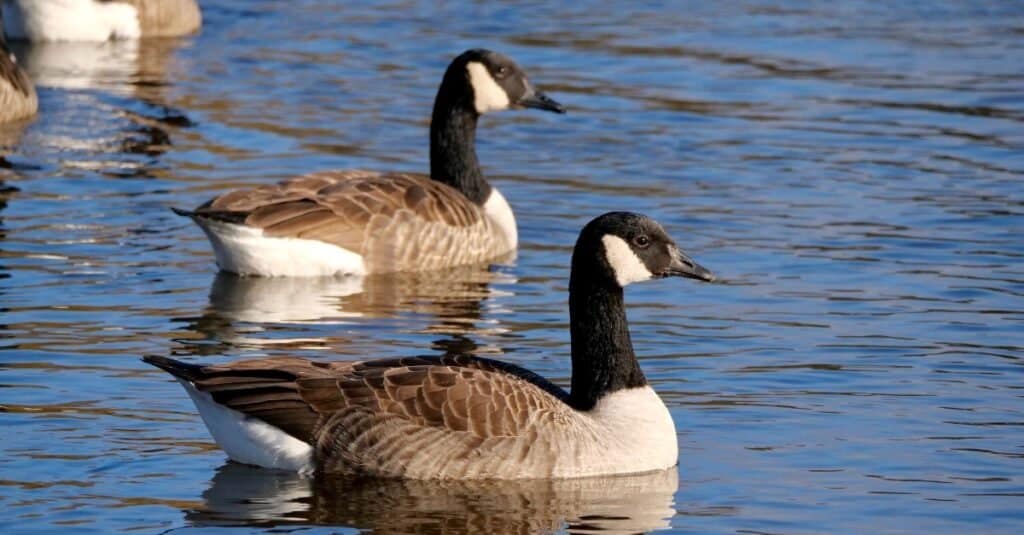
Most geese mate for life and share the parenting duties.
©iStock.com/yujie chen
There are many species of birds that form incredibly strong lifelong bonds with their mate – including puffins, swans, and bald eagles – and geese are no exception. Almost all species of geese mate for life – forming a bond at 2 or 3 years old which lasts for the rest of their lives. If one of the pair dies then the bond isn’t even broken immediately in death either as quite often the remaining bird will appear to grieve for a period before eventually finding a new mate.
In life, geese take advantage of their strong bond and even share parenting duties. Both parents take on the role of protecting and feeding the young which is essential for their survival. Most geese have clutch size of 10 to 12 eggs which hatch after 20 to 30 days of incubation. Goslings can fly at around 10 weeks old but typically remain with their parents until they are one year old.
7. Geese Cannot Fly While They Are Molting
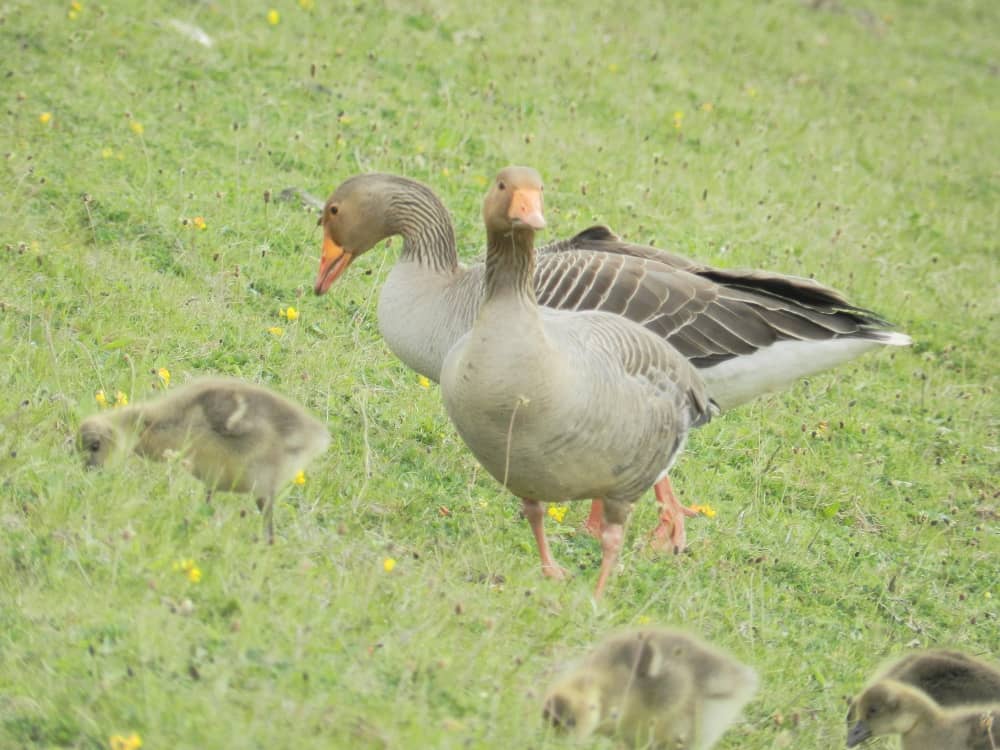
Geese molt in the summer at the conclusion of the breeding season, and are unable to fly at that point.
©Millie Bond – Copyright A-Z Animals
All birds molt every year and geese are no exception. Geese shed their feathers in the summer at the end of the breeding season so that they can grow a completely new set ready for their migration. However, while geese are molting they are unable to fly at all. Instead of shedding only part of their feathers, geese lose all of their feathers – known as a “synchronous molt”. This means that they lose all of their feathers at once – including their flight feathers. Therefore, geese are unable to take off for approximately 20 to 40 days until their new feathers have grown. During this time they are vulnerable to predators as they are unable to fly away to escape. Depending on their location, predators of geese include coyotes, wolves, bears, raccoons, eagles, and foxes.
8. They Spend a Lot of Time on Land
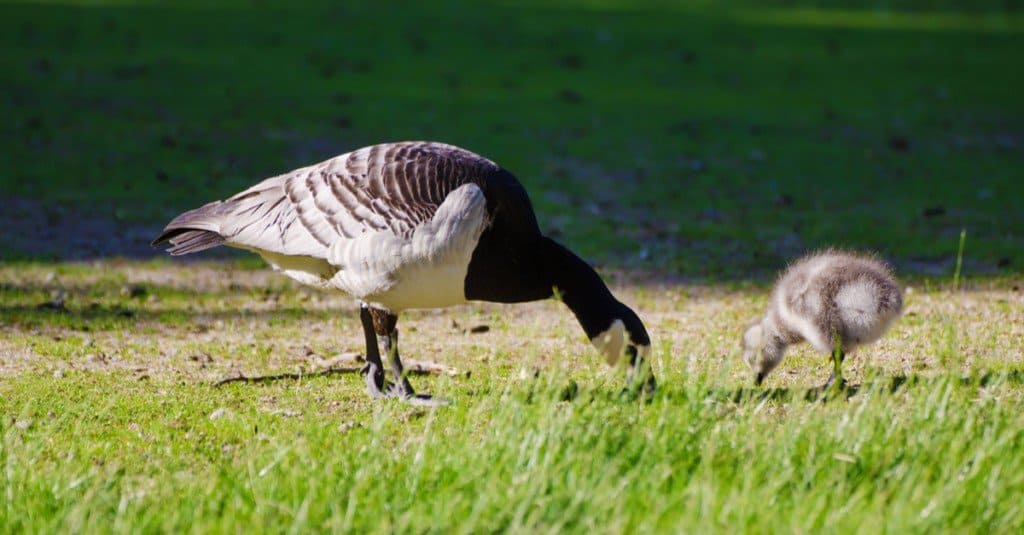
Geese live in a variety of habitats and spend a good bit of their time on land.
©Roxana Bashyrova/Shutterstock.com
Despite being waterfowl geese actually spend quite a lot of their time on land. Geese are extremely adaptable birds. They live in a variety of different habitats – including areas such as parks which are near inhabited areas. Although geese typically live near wetland areas, they don’t spend their entire lives on the water. Instead, they spend most of their time wandering around on land while browsing on the vegetation. Most geese are omnivores but the majority of their diet consists if grass, weeds, seeds, roots, and bulbs.
9. Goslings Bond With the First Living Thing They See
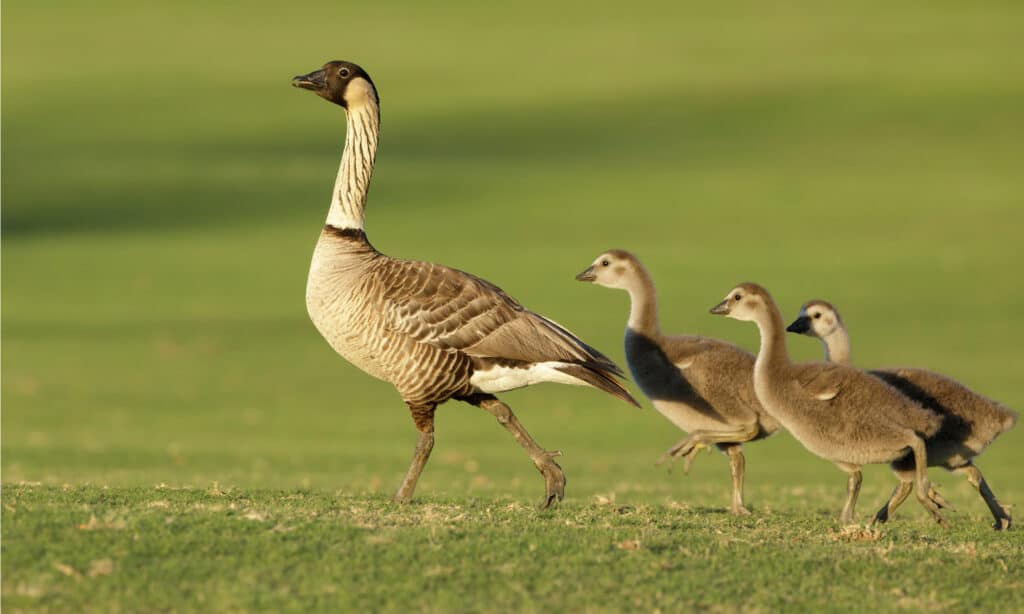
Geese bond with the first living thing they see – even if it is a person
©Agami Photo Agency/Shutterstock.com
If you’ve ever seen the movie Fly Away Home then you’re probably already familiar with this concept. When goslings hatch they instantly assume that the first living thing they see is their mother and bond with it – this is called “imprinting”. This bond is so strong that they will willingly follow it around as they would their actual mother. Goslings will even devotedly follow around a person if that is what they first see!
10. Geese Are Incredibly Loyal
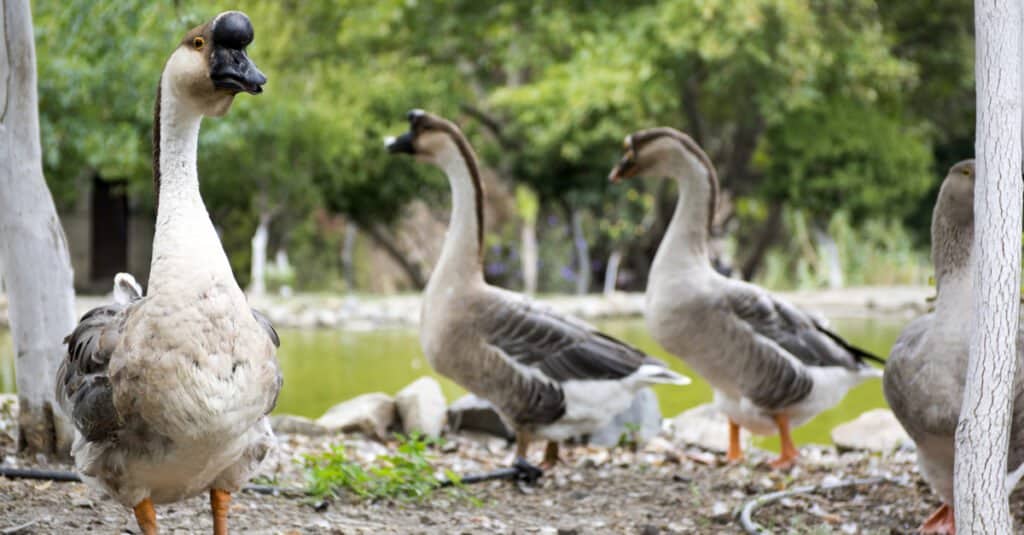
Geese are incredibly loyal to one another and will look after sick or injured members of their flock.
©Iva Vagnerova/Shutterstock.com
As well as forming strong bonds with their mate, geese are incredibly loyal towards other geese too. In fact, they are so loyal that if one bird becomes sick or injured while they are flying in formation then two other geese usually drop out to stay with it. Even though the rest of their group is continuing to fly away these two geese will stay with the injured one to protect it until it either recovers or dies. Afterward, they then take off again in formation with another group or attempt to catch up with their own. The same occurs when they are ready to take off on their migration – if a goose is sick or injured then usually two other birds will stay behind and delay their own departure to look after it.
The photo featured at the top of this post is © Roger Utting/Shutterstock.com
Thank you for reading! Have some feedback for us? Contact the AZ Animals editorial team.







